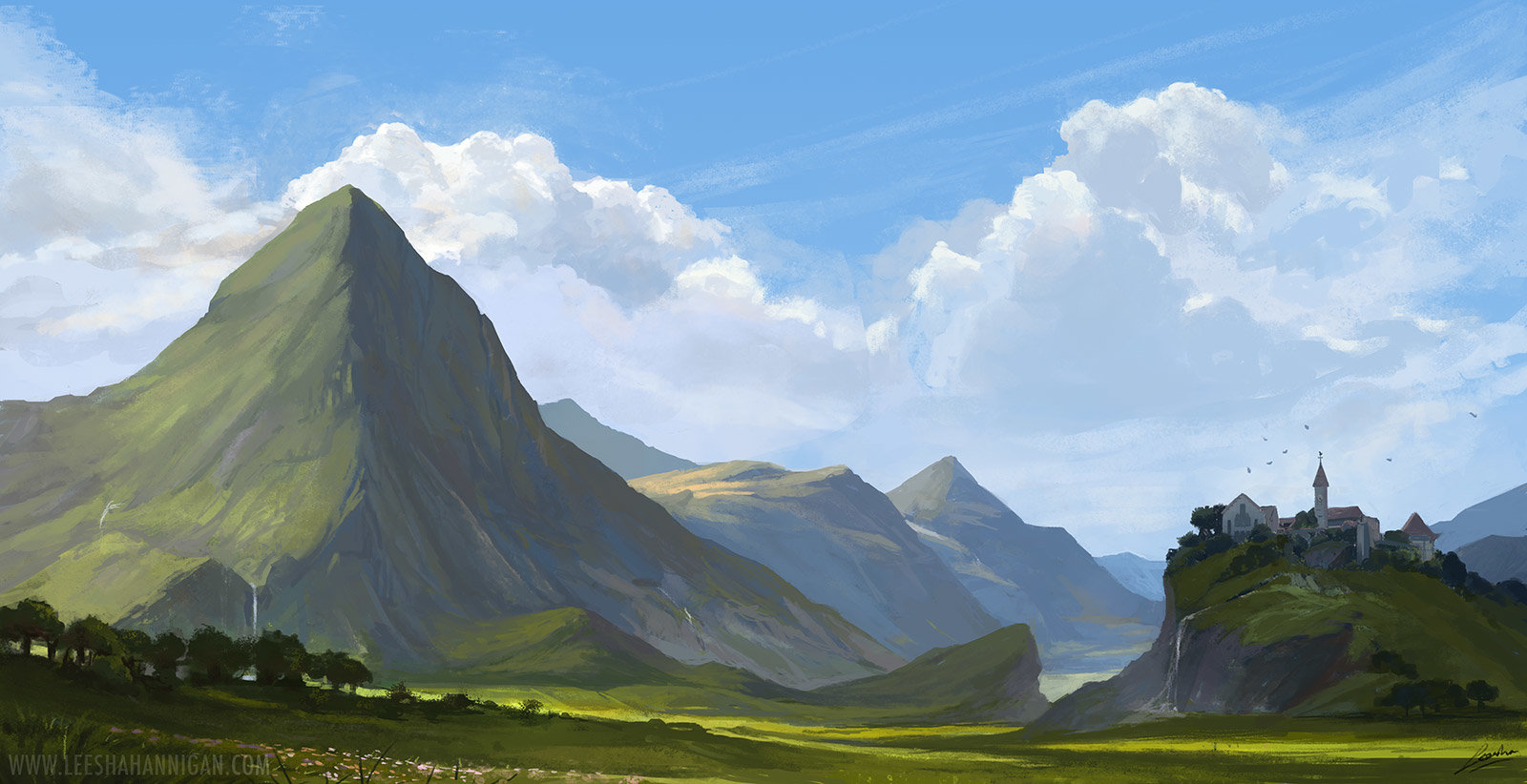

© EHN & DIJ Oakley.īefore the Renaissance, landscapes weren’t painted in any mimetic manner, and there appears to have been no concern in trying to depict these optical effects. The same image, desaturated to monochrome, to show the different lightness and contrast with distance. These are shown clearly in the coloured and monochrome versions of this photograph, taken in the French Alps during fine but slightly hazy weather.

The colour bar at the right shows the shift in hue from foreground back. a shift in hue, normally towards blue (‘cooler colours’).Ī mountain view near Alpe d’Huez, French Alps, showing aerial perspective effects.resulting in a reduction in the range of lightness values, or contrast,.a reduction in the difference in lightness between an object and its background,.This was taken from the same point as the viewpoint of the painting.Īerial perspective is thus made up from several related optical effects, including the following features with increasing distance, prominent when more than a kilometre from the observer: Howard Oakley, view from south of the Worsley Obelisk looking north, digital image, 0850 on 12 June 2014.Īlthough the colours and aspect ratio of this photograph are different, those same zones are visible even when no paint has come between reality and the image you see. There are distinct differences in tone, colour and detail between them. In my watercolour painted on the Downs a short walk from our house, there are four distinct levels of depth: the immediate grassy foreground, the more distant Down with its obelisk and cattle, a further band of hills deeper into the view, and land which is far distant on the horizon. Howard Oakley, Landmarks, 2014, watercolour on Arches 850 gsm NOT paper, 27 x 54 mm, artist’s collection. To illustrate its effects, I apologise for showing one of my own watercolours and a matching unenhanced digital image of the same view. In this article and its companion tomorrow, I look at aerial perspective in landscape paintings, how it works, and how it has changed since the Renaissance, particularly after the invention of photography. By enhancing the visual cues for depth, a painting can make a landscape look deeper by reducing those cues it can look flat.Īmong the most manipulable cues to depth in many landscape paintings are those known as aerial perspective: the way that distant hills fade in contrast, detail and colour, and how their hue shifts towards cooler colours. Normally this option should be disabled, but some interesting effects are possible when this option is enabled.Until the recent widespread use of digital manipulation of images, only painters had the ability to control all aspects of their two-dimensional projections of three-dimensional views. For more information, see the Affect Environment example below.Īffect Background – Specifies whether the effect is applied to camera rays that hit the background (if a background other than VRaySky is used). However, it is possible to enable this option for artistic effects, especially with low visibility ranges. This is because the VRaySky texture already takes into account the amount of scattered sunlight. The default value 1.0 is physically accurate lower or higher values could be used for artistic purposes.įilter Color – Affects the color of the unscattered light.Īffect Environment Rays – When Disabled, the atmospheric effect is applied only to camera rays that hit actual objects, but not to rays that hit the sky.

Inscattered Light – Controls the amount of sunlight scattered from the atmospheric effect. For more information, see the Height example below. The value is in meters and is converted internally based on the current Maya units. Lower values can be used for artistic effects. Height (m) – Controls the height of the atmosphere layer, in meters. For more information, see the Distance example below. Lower values make the fog appear more dense, while larger values reduce the effect of the aerial perspective. Distance (m) – Specifies the distance, in meters, at which the fog has absorbed 90% of the light coming from objects behind it.


 0 kommentar(er)
0 kommentar(er)
